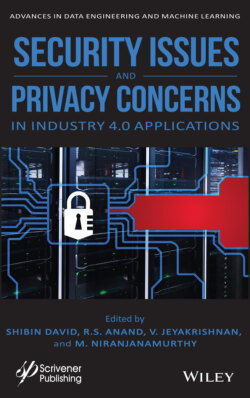Читать книгу Security Issues and Privacy Concerns in Industry 4.0 Applications - Группа авторов - Страница 23
1.3.1 Water Quality Parameters Related to SWMS
ОглавлениеWhen all other high-level services offered by smart cities are considered, SWMS gains the highest value. Research studies are particularly emerging in the drinking water management system for the welfare of the public and also in the field of agriculture. In [11], requirements for the smart water distributed system and water quality parameters such as technological, quality, quantity and topological parameters are discussed. A smart application is designed for the residents to get updates on water level and water quality using Raspberry Pi and MQTT protocol. Residents can use smart applications and can toggle the motors on and off accordingly. A turbidity sensor is used to determine the water purity.
In other countries like Pakistan [12], an IoT-based water management is focused on rural areas and urban areas according to the requirements. In rural areas, due to lower population, automation of IoT is deployed in the irrigation sector, whereas in urban areas, monitoring of water quality in real time is deployed as such areas have high population levels. Water-quality is monitored using the controller module, where the data collected in the cloud is analyzed and the action is performed if the quality falls below threshold value. Ubidots and Thingspeak are the cloud platforms which are used for data storage in the cloud. In rural areas, as cellular connectivity is limited to 2G, implementation of cellular-based connection is impossible. Therefore, an IoT system which can provide sustainable operation is deployed. With this technique, water theft and water distribution policy violation can be eliminated. An actuator-based water distribution system is remotely controlled without any user intervention, which will avoid conflicts over water distribution.
Multi-Intelligent Control System (MICS) can be designed in the IoT framework with the help of the entire monitoring process. It is made possible with the help of smart layers such as smart alerts, smart communication and smart water level. These layers assist in automation of the entire process involved in water management [13].
